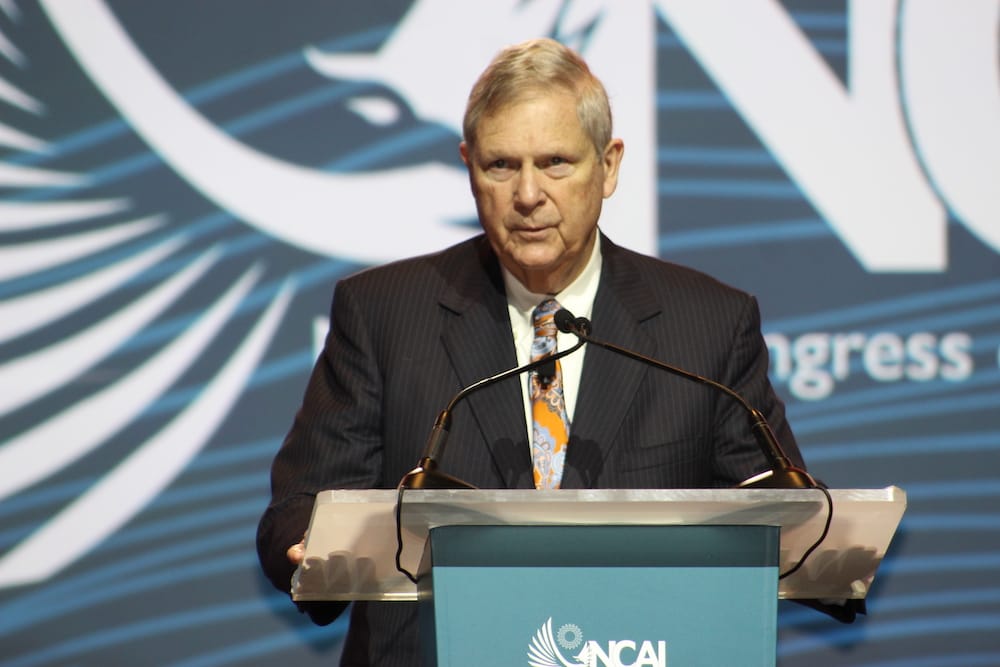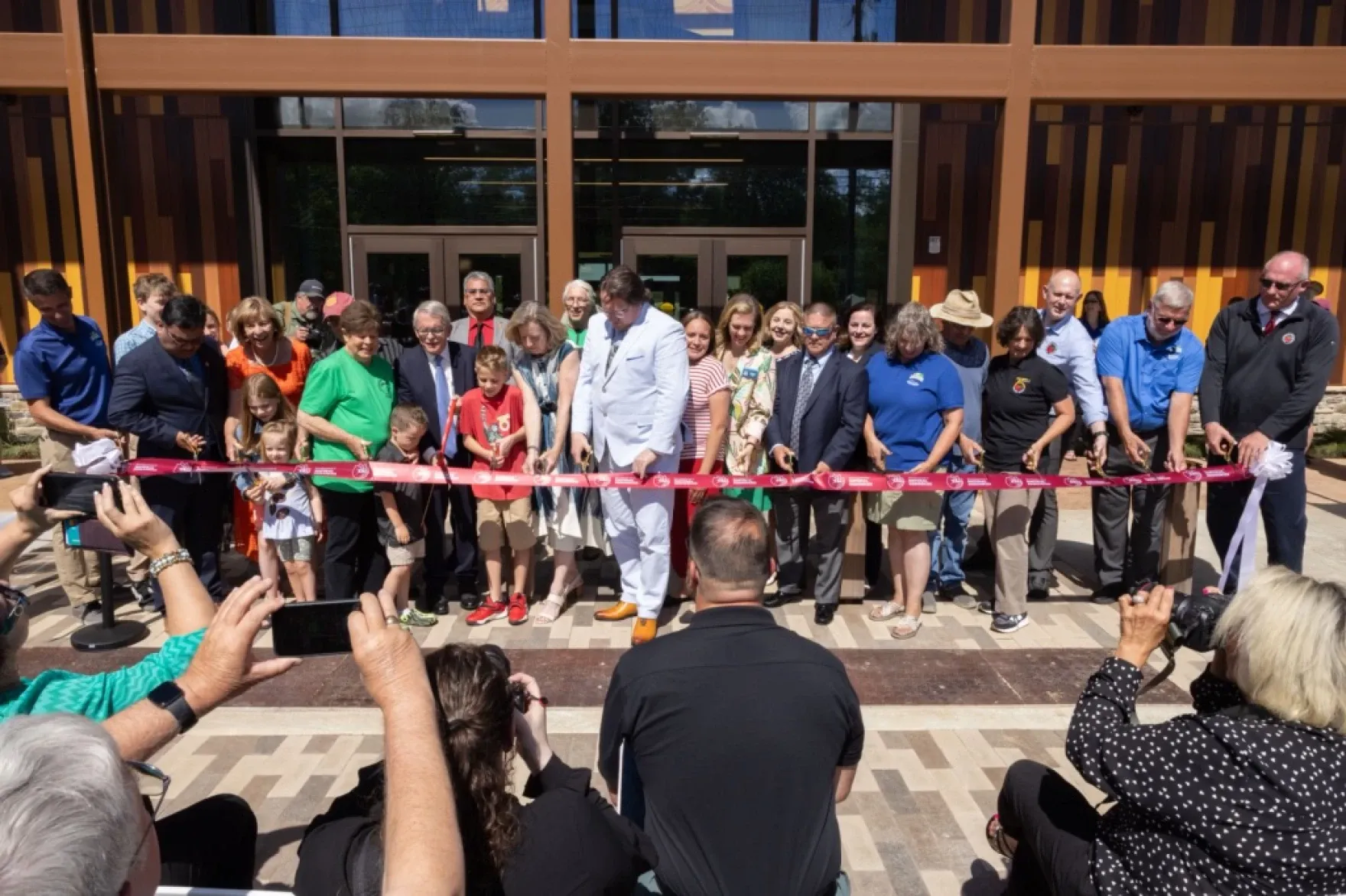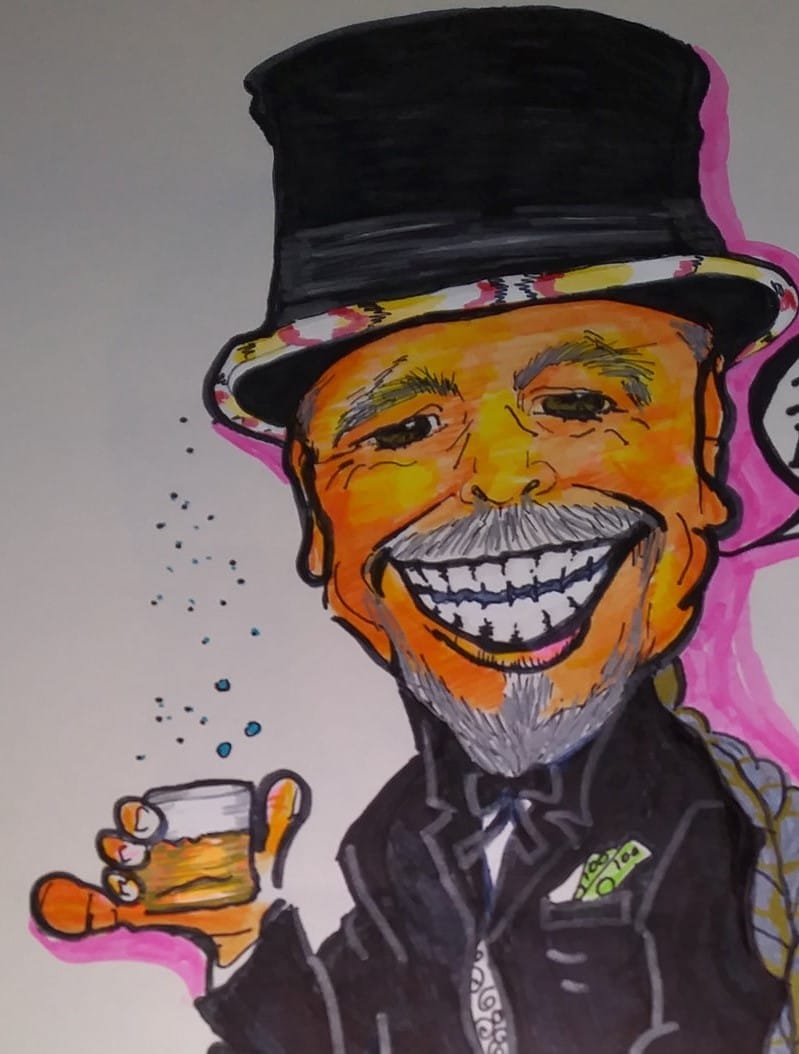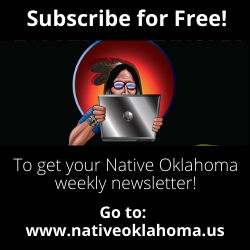

USDA Secretary Vilsack engages with tribal leaders at NCAI, announces $62 million for Indian Country initiatives

Agriculture Secretary Tom Vilsack spent an hour at the National Congress of American Indians (NCAI) general assembly on Wednesday, announcing significant new funding and engaging directly with tribal leaders to hear their concerns.
During his remarks, Vilsack outlined $62 million in funding for forestry and food sovereignty in Indian Country. USDA will award $42 million to eight projects under the Indigenous Animals Harvesting and Meat Processing Grant Program. An additional 23 projects will receive $18 million under the agency’s Tribal Forest Protection Act’s self-determination program, Finally, five Native-led organizations will receive a total of $2.3 million to support providing Indigenous foods in school meal programs.
One highlighted project includes the Eastern Band of Cherokee receiving $6.5 million for a meat processing center, which will help process cattle, hog, sheep, deer, and more. The facility will allow the Eastern Band to establish a meat and fish brand as an economic driver and a way to feed the community.
The Lac Vieux Desert Band of the Lake Superior Chippewa will receive support to collaborate with the Chequamegon-Nicolet National Forest. Their partnership will address lake water quality, habitat, access, food sovereignty, and cultural preservation. In particular, the groups hope to improve wild rice quality by replacing road-stream intersections along the Wisconsin River.
Minnesota-based nonprofit North American Traditional Indigenous Food Systems (NATIFS) will receive support for facilitating access to traditional foods. The nonprofit plans to work with 11 tribes as well as multiple school districts within Minnesota and neighboring states.
During the general session, Vilsack emphasized the USDA’s commitment to forestry and food sovereignty for tribal nations.
“I come here today in an effort to try to make sure that you understand that this is a priority,” Vilsack told the audience. “We certainly have appreciated the enormous work that has been done and recognize that there is still a great deal of work to do.”
After announcing the awards, Vilsack answered an array of questions from NCAI’s Executive Committee. Questions ranged from concerns regarding USDA consultation practices to direct asks, such as expanding the Buy Indian Act.
Reggie Tupponce, tribal administrator for the Upper Mattaponi Indian Tribe, raised a question about the USDA’s preparedness to interact with treaty rights. Tupponce said the agency was often uninformed about treaty rights. He noted that the USDA is the second-largest holder of federal lands to which treaty rights apply.
“Time and again, when we meet with USDA, your lawyers know virtually nothing about treaty rights,” Tupponce said. “How many treaty knowledgeable attorneys do you have on staff at USDA? How can you remedy this lack of knowledge and expertise?”
Vilsack responded that the quick answer was “not enough.” He pointed to a comparatively low number of lawyers on staff — 225 versus the Interior Department’s 500-plus — and a need for Congressional support to improve that.
Vilsack raised a similar issue with expanding the Buy Indian Act, a long-held priority for Native agriculture advocates. The USDA doesn’t have the authority to implement Buy Indian provisions without Congressional approval, Vilsack said. The department is currently in discussions with Congress on what language should go into such a bill, he added.
In addition, recent movement in US courts indicated that minority-focused programs could face discrimination lawsuits, Vilsack said. Prior Tribal Business News reporting has pointed to injunctions against minority-focused debt relief attempted by USDA post-COVID, for example.
“There is a concerted effort now in the courts to restrict the capacity of USDA and all federal departments to be able to provide the kind of focused efforts in Indian Country, or for that matter focused efforts in things involving diversity, equity, inclusion, and accessibility,” Vilsack said.
The pushback against DEI and set-asides will likely have an impact on the funding and legislation, according to Vilsack. “It’s not going to be as simple as it was in the past to get a Farm Bill passed with those (kinds of) provisions.”
After addressing the audience’s questions and concerns, Vilsack continued to elaborate on the USDA’s forestry and food sovereignty initiatives during a one-on-one conversation with Tribal Business News.
Vilsack said the funding for meat-processing facilities would facilitate providing traditional Indigenous food products, such as bison, to the school lunch program announced today.
He also told Tribal Business News it is long overdue for the U.S. Forest Service to work with tribes as co-managers of forests.
“We have come to realize that tribes, particularly those near forests, understand how to manage forests because of their Indigenous knowledge. They have a stake in seeing that the forests are maintained for future generations,” Vilsack said.
Tribal Business News and Native News Online Editor Levi Rickert spoke with Secretary Vilsack after his remarks and provided additional reporting at the NCAI General Assembly.

Shawnee leaders travel from Oklahoma to Ohio to celebrate state park preserving their history

After two years of construction, Great Council State Park in Ohio opened to the public, aiming to share the accurate story of the Shawnee people.
By Sarah Liese
Last week’s ribbon-cutting ceremony at Great Council State Park was the result of an ongoing partnership between three federally recognized Shawnee Tribes, the Oklahoma Department of Natural Resources, and Ohio History Connection.
In the 1830s, the Indian Removal Act allowed the U.S. Government to push the Shawnee out of their homelands in Ohio, eventually forcing them into Oklahoma.
Three Shawnee leaders attended the opening outside of Dayton, Ohio.
Treasurer Joseph Blanchard of the Absentee Shawnee Tribe and Chief Ben Barnes of the Shawnee Tribe chose to express themselves in Shawnee during the ceremony.
As Chief Barnes noted, the Shawnee language will not fade on their ancestral homelands; rather, it will continue to be spoken at the state park.
“I wondered how often Shawnee language would be heard after our absence,” Barnes said. “Now you have it for all time, thanks to this museum.”
The park, located about 20 miles outside of Dayton, Ohio, features an interpretive center designed to reflect a 1700s Shawnee longhouse, which was historically used as a gathering place.
“This is the first state park in Ohio dedicated to telling the story of our Native Americans, who truly were the first Ohioans,” Ohio Governor Mike DeWine said during the ceremony.
Inside the 12,000 square-foot interpretive center, visitors can learn more about what life was like prior to colonization as well as contemporary aspects of the tribal nations.
The park sits on the former site of the vacant Tecumseh Motel, which showcased a caricatured cartoon depiction of a Shawnee leader. It was demolished so the park could be built.
As Chief of the Shawnee Tribe Ben Barnes also shared, the center also shatters the stereotype that Indigenous people are of the past.
“And on the walls are photographs, portraits of living Shawnee peoples… in all professions,” Barnes said. “And their portraits are on the wall. And there's snippets of thoughts from those individuals telling their story, what it means to be Shawnee.”
He said it is an important reminder for those who may believe Indigenous people exist only in history books — that’s simply not the case.
Tribal Festivals this next two weekends:
Iowa Tribal Pow-wow
June 14th-16th, 2024
Iowa Tribe of Oklahoma Pow-wow Grounds
Perkins, OK
Peoria Powwow
June 21st - 23rd, 2024
Buffalo Run Casino Showplace (indoor & air-conditioned!)
47th Annual Muscogee Nation Festival
June 20th-23rd, 2024
Okmulgee, OK
Sour Sofkee: Fixico Rides Golf Cart to Victory in 5k

By Fus Yvhikv
Anticipation was in the air as hundreds of runners were converging for the start of the 2024 Day Ohn Day 5k race at Mohawk Park in Tulsa. The runners were adorned in a kaleidoscope of vivid and vibrant running gear. All colors of the rainbow were represented in their singlets, shorts, and expensive racing shoes.
Fixico emerges from his rez car wearing a short sleeve cowboy shirt, baggy cargo shorts, and neon yellow Crocs.
“Hesci, cepan,” Fixico greets us as he stubs out his cigar. “You boys ready to run?”
Tarpalechee and Yahola have also entered the race. Like Fixico, their training regimen consisted of dashing to the fridge to fetch another brewski.
Their running attire was straight out of the 1970s. They were wearing bun hugger green shorts and tube socks that nearly reached their knees. Completing their retro attire was their headbands and 1970s Adidas shoes with three green stripes. The shoes appear brand new.
“Now let’s go over the plan,” Fixico orders.
“Ya Volt,” Yahola responds as he stands with a Nazi salute.
“Heyluh!” Fixico says. “We don’t have time for this funny business. The gun is about to go off. Now listen up. First place wins $500. I’m going to get that money.”
“You mean we, don’t you?” Yahola asks.
“Wikvs!” Fixico shouts. “Now, Tarpalechee and Yahola are going to be my blockers. Just clear a path for me and I’ll burst out into the lead. That’s where Fus comes in.”
Tarpalechee and Yahola frown and exchange glances as Fixico winks at me. “What could go wrong?” I think.
“Runners to your marks,” an announcer intones.
“Stodis,” Fixico says.
The gaggle of runners resemble an enormous ameba as they merge behind the start line. Fixico, Tarpalechee, and Yahola forcefully elbow their way into the second row of the tightly packed mass of humanity. The loud crack of the starter’s pistol causes the ameba to rapidly surge forward. Only 200 yards into the race and Tarpalechee is already panting heavily. His pace begins to slow.
“Don’t fail me, Tarp!” Fixico shouts.
“Can’t breathe,” Tarpalechee wheezes.
“Catch up with that guy to the right and then block him,” Fixico says. “I’ll pass through and take the lead.”
With his last reserve of energy Tarpalechee manages to pull even with the lead runner. His short stubby legs and tiny alligator arms are pumping furiously. A sudden leg cramp causes him to fall sideways into the path of the lead runner. The runner trips over Tarpalechee, flies high into the air and lands on the pavement with a fleshy thud.
Tarpalechee’s body continues to roll toward the curb. The entire pack of front runners trip over him and fall to the ground in a tangled mass of arms and legs. Fixico and Yahola, running side by side, find themselves in the lead.
“I’m going to win that $500!” Yahola shouts.
“No you’re not. It’s mine,” Fixico says.
Yahola attempts to speed away from Fixico, but he grabs the back of Yahola’s shirt.
“Let go!” Yahola says as he throws an elbow at Fixico.
Fixico retaliates with a punch upside Yahola’s head. The two men proceed to exchange punches as they lead the race. They resemble Roller Derby contestants minus the helmets and elbow pads. Spectators watch in stunned disbelief.
Fatigued, bloodied, and thirsty, they stop at a water station. Yahola is bent over, his hands on his knees, and breathing rapidly. Fixico rips off Yahola’s runner’s bib and dashes into nearby bushes. I’m there waiting in Fixico’s rez car.
“Skoden!” Fixico says between heavy panting. “Let me off about one-quarter of a mile from the finish line. That $500 is mine!”
“Will do,” I say as I turn the key. The engine begins cranking. Its cranking gets less energetic with each revolution. Then there is complete silence. Fixico slams his fist on the dashboard and screams “Nooooooo!”
A golf cart rolls up next to us. Four golfers get out and walk over to the water station. Fixico stares at the golf cart then turns toward me with a conspiratorial smile. I look at the cart, then at Fixico.
“No way,” I say.
“Stoodis.”
We dash to the cart and take off across the golf course. As we cross the fairways a hailstorm of golf balls rains down on the cart.
“FORE!” Fixico screams as we speed across a putting green and nearly run over a quartet of golfers. In our wake we leave the golfers splayed out on the well-manicured green. Angry golfers shout and curse at us as we zoom down the fairways.
“Weeechaaa!” Fixico yells. “We made it!”
Just then we run over a bag of golf clubs and the cart careens into a pond. We swim to shore and discover we are only 300 yards from the finish line.
With his bright neon yellow Crocs bobbing in the water, Fixico takes off running. Dripping wet, his back covered in moss, Fixico crosses the finish line in first place. Race officials hand him a trophy and they pose for photographs. Fixico grins ear to ear.
“Where’s my $500?” Fixico asks a race official.
“The prize money is only for the pros. You’re an amateur.”
“Heyluh!” Fixico responds. “My Crocs!”


